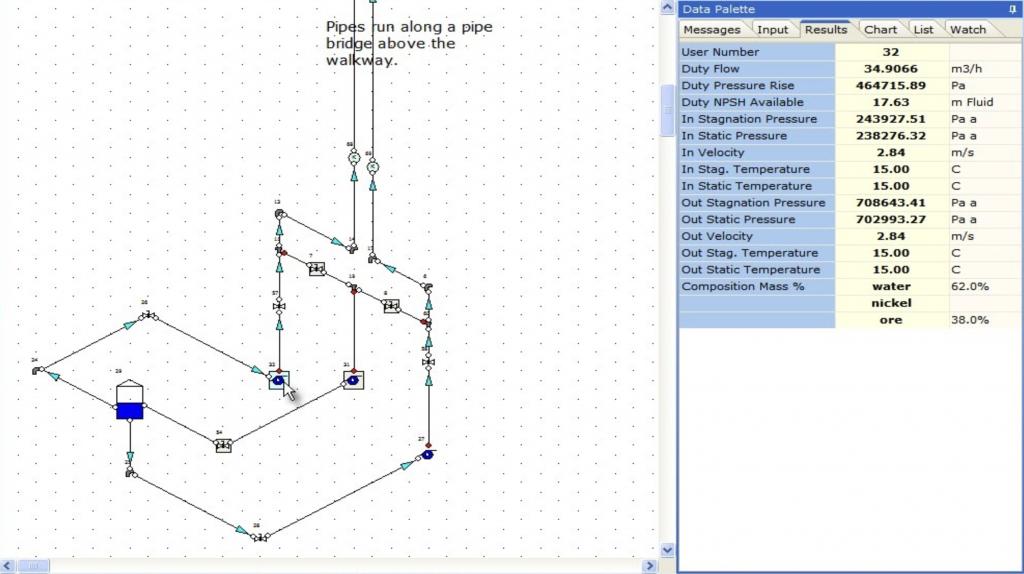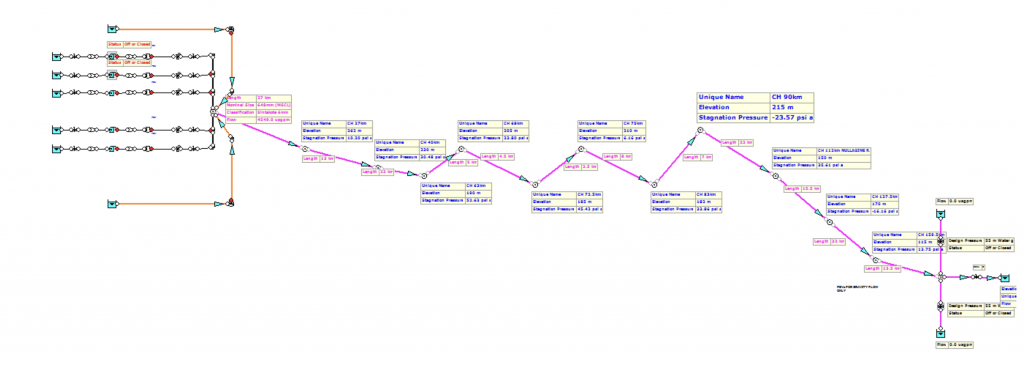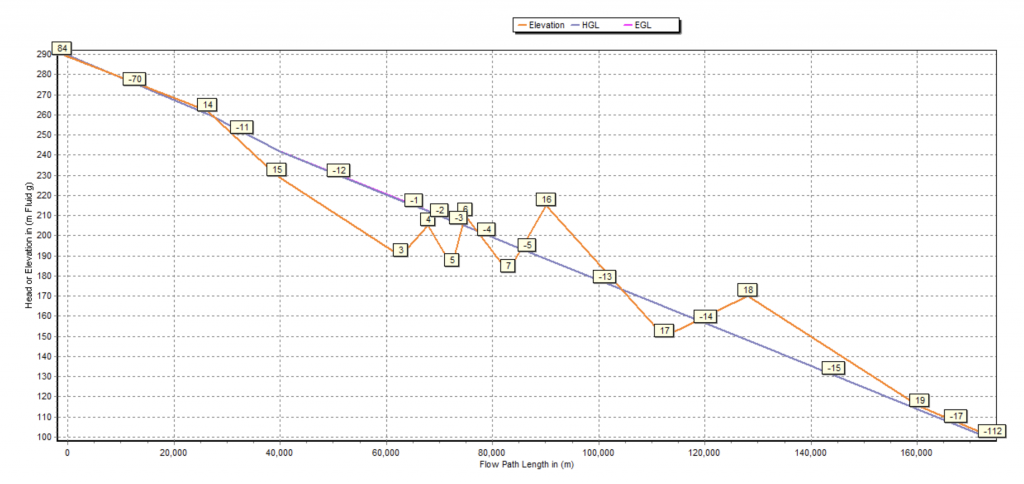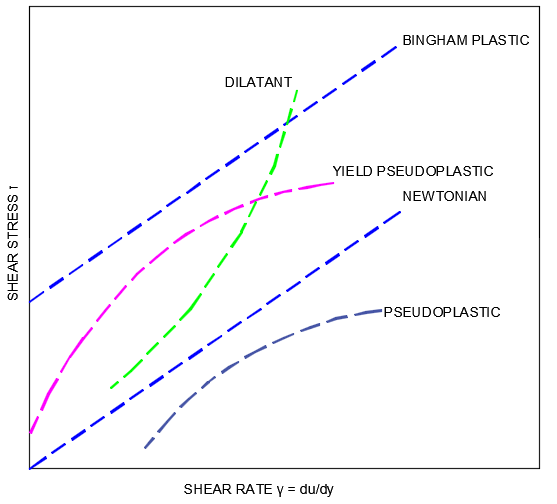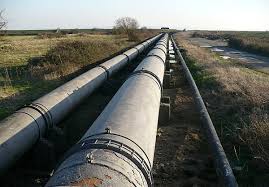1. Nickel Ore Delivery System:
The image below provides an example of a nickel ore slurry delivery system with a solids concentration of 38% by weight.
In this case, the particle d50 was known and defined however, you can also enter particle size distribution (PSD). The pumps in this case have been automatically sized based on a design flow rate.
This example shows a pumped slurry system that has been exported to Excel. The content of the export can be fully controlled. You can download the xls file via the download link below. Click on the tabs to display the various Excel pages. Exporting to Excel allows you to customise your reports and provides an excellent method of communicating the results of a study, to a client or colleague.

